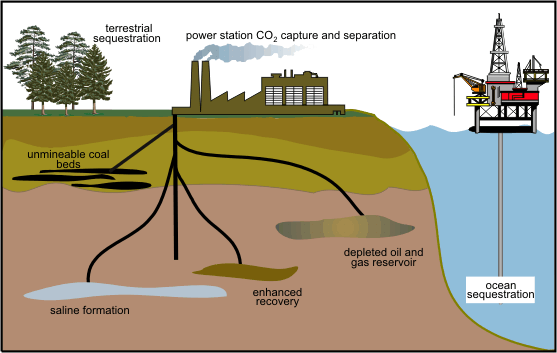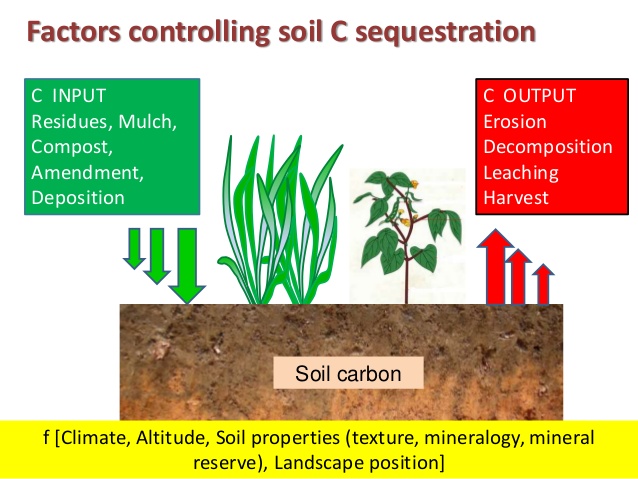What is the issue?
The ability of soils to sequester carbon should be given a serious focus by policymakers in the context of climate change actions.
What is carbon sequestration?
- It is the process by which carbon dioxide is removed from the Earth’s atmosphere and then stored in liquid or solid form.
- It could involve both natural and artificial processes to remove and store carbon.
- Significant carbon pools on earth are found in the earth’s crust, oceans, atmosphere and land-based ecosystems.
- The prime purpose of artificially doing this is to mitigate or delay global warming and avoid extreme climate change.

What is the need for focussing on soils?
- Agricultural Practices - After the changes undertaken as part of the Green Revolution, crop yields increased for several decades.
- But parallelly there has also been a dramatic increase in the use of chemicals as pesticides, herbicides and fertilizers.
- The resultant degraded soils are getting to be a prime reason for undermined agricultural yields in many places now.
- Industrial changes to agriculture have led to a range of adverse effects including:
-
- loss of biodiversity
- elimination of beneficial microbes and insects
- reduction in yield
- contamination of water bodies and soils
- increasing toxicity, etc
- Global Warming - Currently, the world is on a path to be about 3ºC warmer than pre-Industrial times.
- This is despite adhering to 2015 Paris climate deal commitments.
- Atmospheric concentrations of carbon dioxide have crossed limits and oceans are already turning acidic.
- But, policies are largely focussed on reducing greenhouse gas (GHG) emissions from electricity sector, transport and industry.
- The policy shortfalls call for a renewed focus in understanding how soils can serve as carbon sinks to address the increasing pressures.
How effective are soils as carbon sinks?
- SOC - Soil organic carbon (SOC) comes from plants, animals, microbes, leaves and wood, mostly found in the first metre or so.
- Soils contain around 2,300 Gt (1 gigatonne = 1 billion tonnes) of organic carbon, making this the largest terrestrial carbon pool.
- Benefits - Increasing SOC through various methods can improve soil health.
- It can contribute to agricultural yield, food security, water quality, and also reduce the need for chemicals.
- It helps address carbon mitigation and also improve conditions of fresh water, biodiversity, land use and nitrogen use.
- Moreover, carbon sequestration in soils has the potential to offset GHG emissions from fossil fuels by up to 15% annually.
- Utilising this option would thus offer the breathing time before other technologies can help transiting to a zero-carbon lifestyle.
How is it achieved?
- There are many conditions and processes that determine changes to SOC content.
- These include temperature, rainfall, vegetation, soil management and land-use change.
- Thus, increasing Soil Organic Carbon involves adopting sustainable agricultural practices to keep these factors in balance.
- The approaches to increase SOC include:
- reducing soil erosion
- no-till-farming
- use of cover crops
- nutrient management
- applying manure and sludge
- water harvesting and conservation
- agroforestry practices, etc

What should the government do?
- India does have a large number of successful sustainable agricultural practices.
- The knowledge of farmers who have successfully experimented with these methods must be considered in research and policy.
- State-level policy makers should identify the kinds of support needed by farmers with small holdings to transition from existing practices.
- There is also a need for revising the existing fertiliser subsidy policy and promoting organic fertilizers.
- The ability of soils to sequester carbon is thus a win-win strategy for farmers, people and for climate change.
Source: The Hindu

